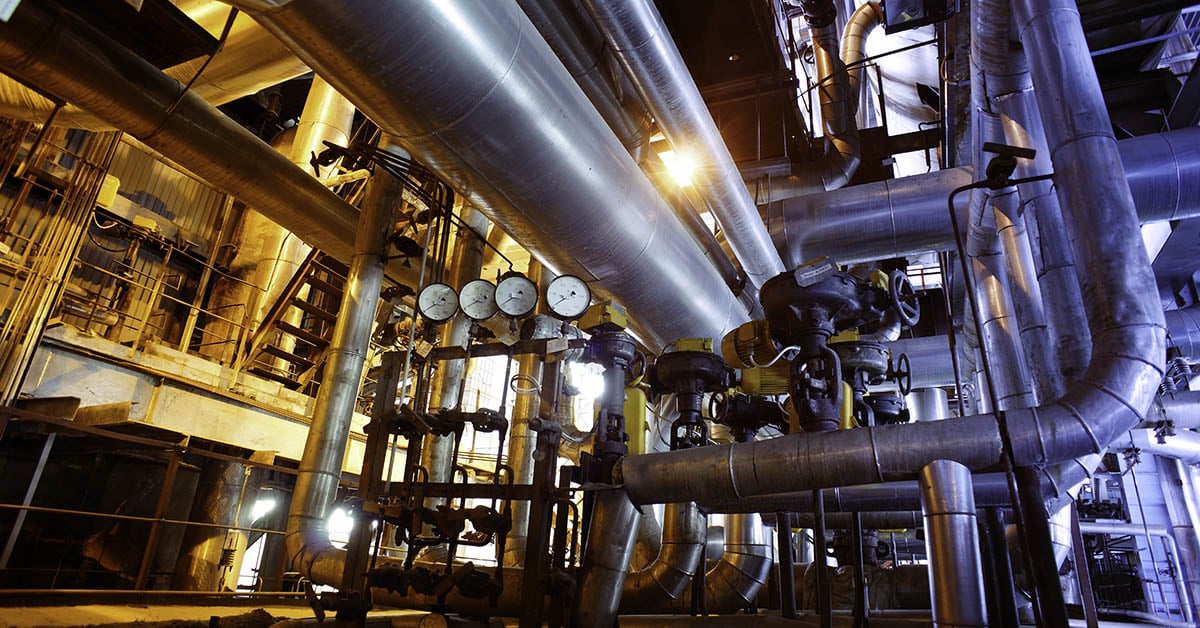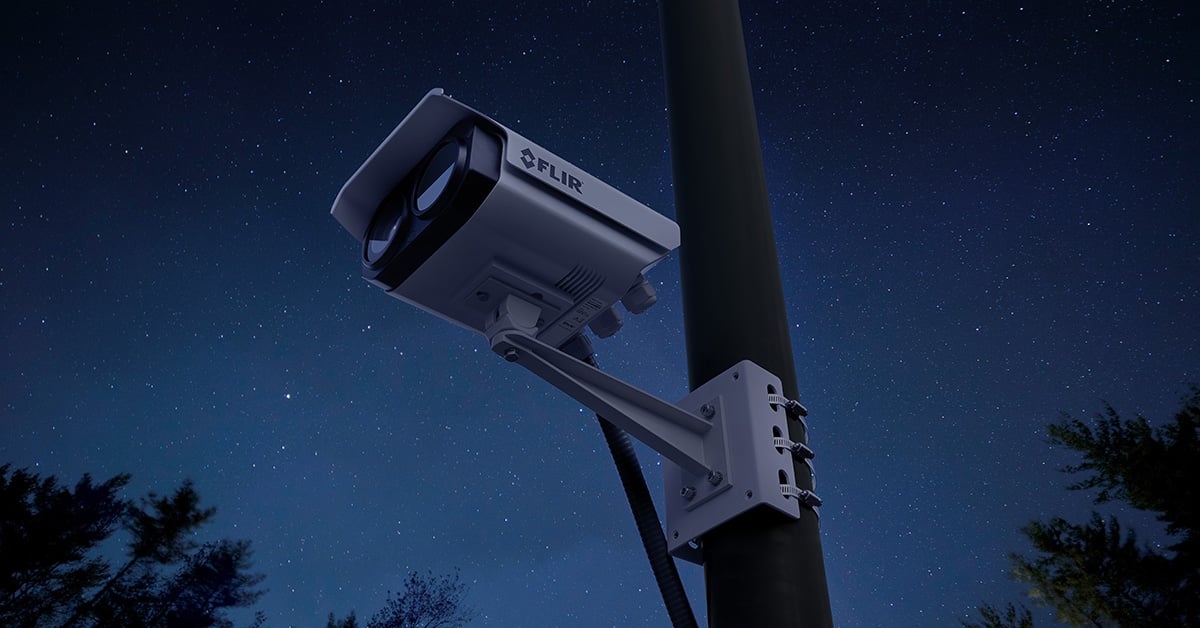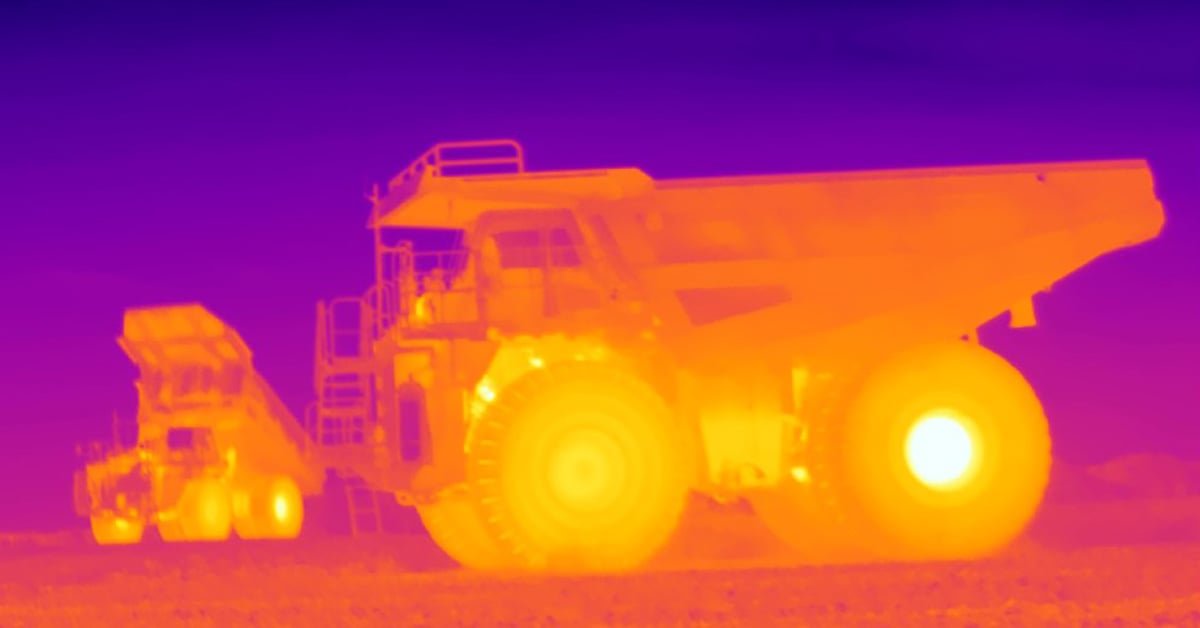Thermal imaging for Data Centers

Data center maintenance teams have a big share in safeguarding the critical resource that customers and businesses depend upon. Fortunately, they have one secret weapon that enables them to spot issues in an early stage before they turn into big problems: FLIR thermal imaging.
The data center market has seen a massive growth in recent years. Spurred by a growing adoption of cloud technologies, AI, IoT, 5G and big data, new data centers are being built across all continents at fast pace. Whether they are in-house data centers for some of the largest and most influential companies, or built by specialized vendors offering infrastructure services, data centers fulfill a critical role in maintaining the continuity of a business. Downtime of a data center can have an enormous economic impact and needs to be avoided at all costs. In addition to financial loss, reputational damage can be equally impactful, especially when the data center is supporting customer-facing services.
Guaranteeing uptime has become increasingly complex for data centers. With so much mechanical, electrical and electronic infrastructure under one roof, overheating is a major concern, not only because the infrastructure is not using the energy efficiently, but also because overheating can cause a complete shutdown of servers, impacting users around the world, or even data or equipment loss. One of the most reported incidents is the 2013 overheating of a Microsoft data center operating some of its cloud services, including Outlook, which led to services being lost for 16 hours.
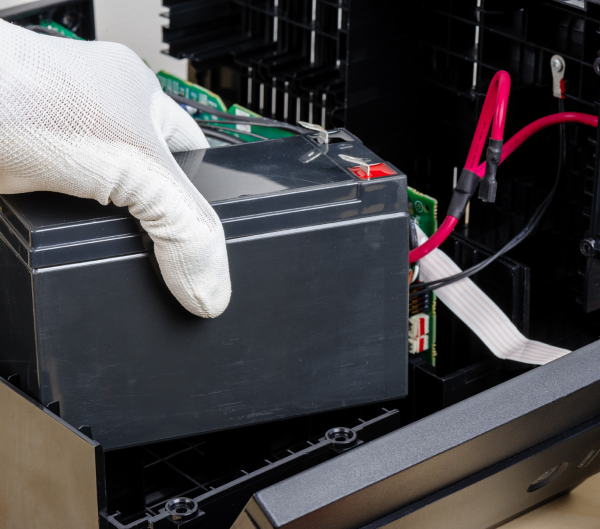
Detect problems in electrical switchgear, motors, HVAC infrastructure, uninterruptible power supplies (UPS), power distribution units (PDU), batteries and generator equipment
MAINTENANCE INSPECTIONS WITH THERMAL IMAGING CAMERAS
The maintenance of a data center today involves much more than IT operations. Power distribution systems and cooling infrastructure are also essential for keeping the data center up and running, and for preventing mechanical or electrical failures and resulting outages.
Many systems that are critical for the data center’s operation heat up before they fail. Temperature is an important indicator of energy consumption and equipment operation, which is why infrared thermography (thermal imaging) is an ideal tool to inspect power consumption, electrical installations, cooling equipment and computing hardware.
Periodic inspections with a thermal imaging camera have become indispensable in predictive and preventive maintenance programs.
Thermal cameras help maintenance staff to detect problems in electrical switchgear, motors, HVAC infrastructure, uninterruptible power supplies (UPS), power distribution units (PDU), batteries and generator equipment and all electrical devices that feed the server systems, before these problems turn into serious failures or downtime.
With cloud computing becoming the new normal, and as data centers are growing to great scales, the need for higher computing density and power efficiency is growing as well. Data center owners are seeking ways to increase their capacity, but they also want to reduce costs and energy. Thermal imaging can give them important information on how to optimize energy and space requirements, without causing overheating.
In short, regular inspections with thermal imaging cameras can help maintenance staff to:
- Find and fix hidden problems before they turn into unplanned downtime.
- Reduce the chance of component degradation going unnoticed due to overloaded circuits or loose connections.
- Prevent equipment breakdowns
- Optimize energy management and space allocation
Thermal Imaging Applications
Thermal imaging is the perfect technology to tackle the wide range of maintenance and inspection jobs for data centers.
ELECTRICAL AND MECHANICAL SYSTEMS
Thermal imaging cameras can be used to inspect a variety of electrical or power generation-related systems. Heat is an important indicator for defects in electrical installations. When current passes through a resistive element, it generates heat. Over time, the resistance of electrical connections can increase, due to loosening and corrosion for instance. The corresponding rise in temperature can cause components to fail, resulting in unplanned outages.
Electrical systems can also suffer from load imbalances and increases in impedance to current. Thermal inspections can quickly locate hot spots, determine the severity of the problem, and help establish the time frame in which the equipment should be repaired.
Thermal imaging cameras will help you to spot issues with:
- Overheated connections
- Overloaded or imbalanced circuits
- Damaged switches
- Faulty fuses
- Power supplies
- Battery systems
- Generator systems
- Uninterruptible Power Supplies (UPS)
- Transformers
- Electrical panels
- Resistive load banks
HVAC AND COOLING SYSTEMS
To run smoothly and efficiently, data centers need perfectly air-cooled conditions. Data centers are typically making use of a hot aisle/cold aisle layout principle. Server racks are lined up in aisles with the front sides facing each other. The cold aisles get cold air directly from the Computer Room Air-Conditioning (CRAC) unit from the bottom of the raised floor. The cool air cools down the servers on the racks. Meanwhile, the backs of the servers vent out hot air in the hot aisle, which then returns to the CRAC unit.
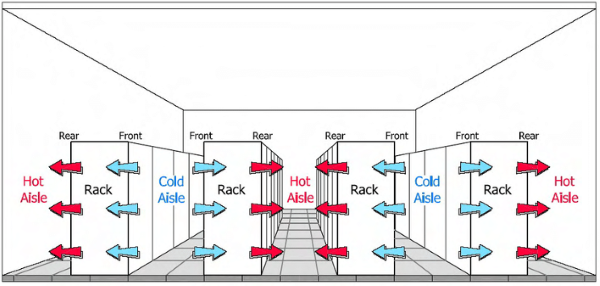
Data centers are typically making use of a hot aisle/cold aisle layout principle
Thermal imaging has become increasingly important to verify the proper hot aisle/cold aisle operation, especially because data centers today are condensing more servers into their racks. Thermal cameras will enable users to see problems such as misaligned ductwork and electrical faults, and then make decisions about corrective actions. HVAC inspection with a thermal imaging camera can help to:
- Monitor server rack temperature distribution patterns
- Locate misrouted and leaking ducts
- See electrical or mechanical CRAC unit defects
- Confirm the source of energy losses
- Find missing insulation
- Discover AC condensate leaks
- Find internal server fans which are inoperable or damaged
RENEWABLE ENERGY
Data center operators are increasingly improving their use of renewable energy sources, including solar and wind power. These renewable power sources enable data centers to reduce their environmental impact, whilst meeting long-term sustainability goals.
FIRE PROTECTION
Although data center fires are relatively rare, they can have a devastating impact. Data centers may be equipped with fire alarms and firefighting systems, but once a fire starts, asset damage is almost certain. Fixed thermal imaging cameras can identify hot spots before they ignite and provide an early warning response to avoid a full-on destructive fire before assets are harmed or safety is compromised.
PHYSICAL SECURITY
Thermal cameras not only detect hot spots or temperature differences. They also help protect a physical perimeter against unwanted intruders or trespassers. As data centers operate 24/7, they need effective solutions to help them monitor the premises and detect threats around the clock.
Thermal security cameras that offer high contrast, high resolution and long detection ranges are ideal for data center deployments. Unlike standard video cameras, thermal cameras can see in most adverse weather conditions– such as light rain, fog, smoke, or total darkness.
When integrated with video analytics, thermal cameras can distinguish between a human or vehicle. When paired with radar, customers gain redundancy and reduce the likelihood of a false positive. By combining thermal cameras with HD visible cameras, remote operators can review thermal and visible video streams of the scene for improved alarm verification and intruder identification.
Download the tech note to find out more on thermal imaging for Data Centers.
